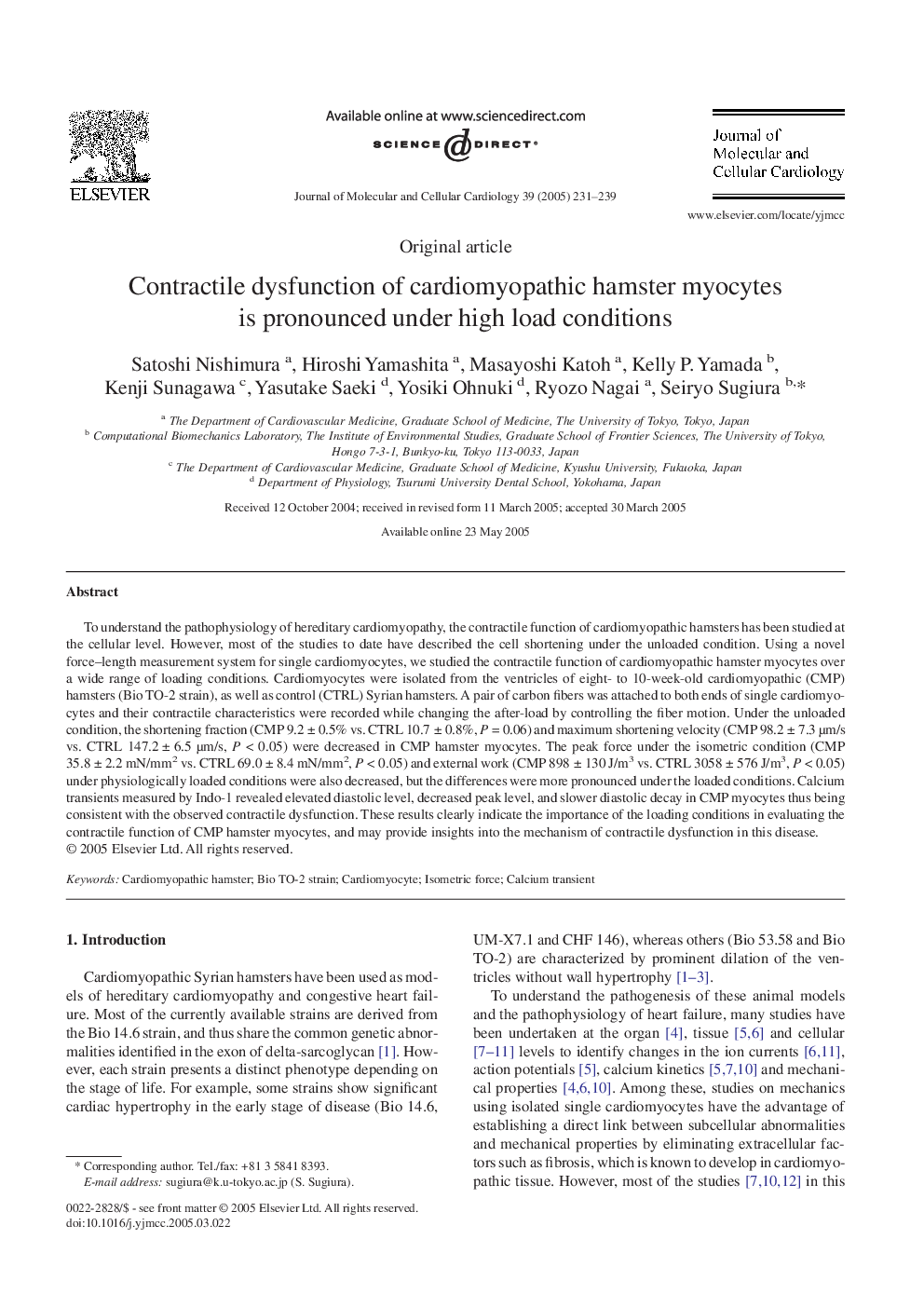| Article ID | Journal | Published Year | Pages | File Type |
|---|---|---|---|---|
| 10954343 | Journal of Molecular and Cellular Cardiology | 2005 | 9 Pages |
Abstract
To understand the pathophysiology of hereditary cardiomyopathy, the contractile function of cardiomyopathic hamsters has been studied at the cellular level. However, most of the studies to date have described the cell shortening under the unloaded condition. Using a novel force-length measurement system for single cardiomyocytes, we studied the contractile function of cardiomyopathic hamster myocytes over a wide range of loading conditions. Cardiomyocytes were isolated from the ventricles of eight- to 10-week-old cardiomyopathic (CMP) hamsters (Bio TO-2 strain), as well as control (CTRL) Syrian hamsters. A pair of carbon fibers was attached to both ends of single cardiomyocytes and their contractile characteristics were recorded while changing the after-load by controlling the fiber motion. Under the unloaded condition, the shortening fraction (CMP 9.2 ± 0.5% vs. CTRL 10.7 ± 0.8%, P = 0.06) and maximum shortening velocity (CMP 98.2 ± 7.3 μm/s vs. CTRL 147.2 ± 6.5 μm/s, P < 0.05) were decreased in CMP hamster myocytes. The peak force under the isometric condition (CMP 35.8 ± 2.2 mN/mm2 vs. CTRL 69.0 ± 8.4 mN/mm2, P < 0.05) and external work (CMP 898 ± 130 J/m3 vs. CTRL 3058 ± 576 J/m3, P < 0.05) under physiologically loaded conditions were also decreased, but the differences were more pronounced under the loaded conditions. Calcium transients measured by Indo-1 revealed elevated diastolic level, decreased peak level, and slower diastolic decay in CMP myocytes thus being consistent with the observed contractile dysfunction. These results clearly indicate the importance of the loading conditions in evaluating the contractile function of CMP hamster myocytes, and may provide insights into the mechanism of contractile dysfunction in this disease.
Related Topics
Life Sciences
Biochemistry, Genetics and Molecular Biology
Cell Biology
Authors
Satoshi Nishimura, Hiroshi Yamashita, Masayoshi Katoh, Kelly P. Yamada, Kenji Sunagawa, Yasutake Saeki, Yosiki Ohnuki, Ryozo Nagai, Seiryo Sugiura,
